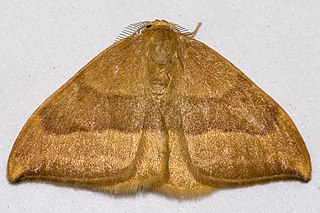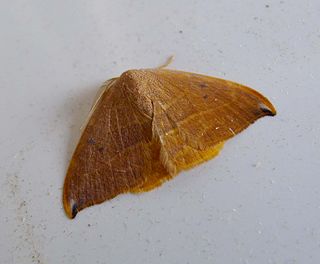The family Drepanidae contains about 400 species, of which only eight occur in Europe. Six of these are resident in Great Britain and one is an occasional immigrant:

- Falcaria lacertinaria , scalloped hook-tip — throughout
- Watsonalla binaria , oak hook-tip — south, central (Vulnerable [1] ) ‡*
- Watsonalla cultraria , barred hook-tip — south, central (local)

- Drepana falcataria , pebble hook-tip
- Drepana falcataria falcataria — south, centre
- Drepana falcataria scotica — northern Scotland (local)
- Drepana curvatula , dusky hook-tip — south, east (immigrant)
- Sabra harpagula , scarce hook-tip — south-west (Red Data Book)
- Cilix glaucata , Chinese character — south and centre (common), local in Scotland
Species listed in the 2007 UK Biodiversity Action Plan (BAP) [2] are indicated by a double-dagger symbol (‡)—species so listed for research purposes only are also indicated with an asterisk (‡*).





